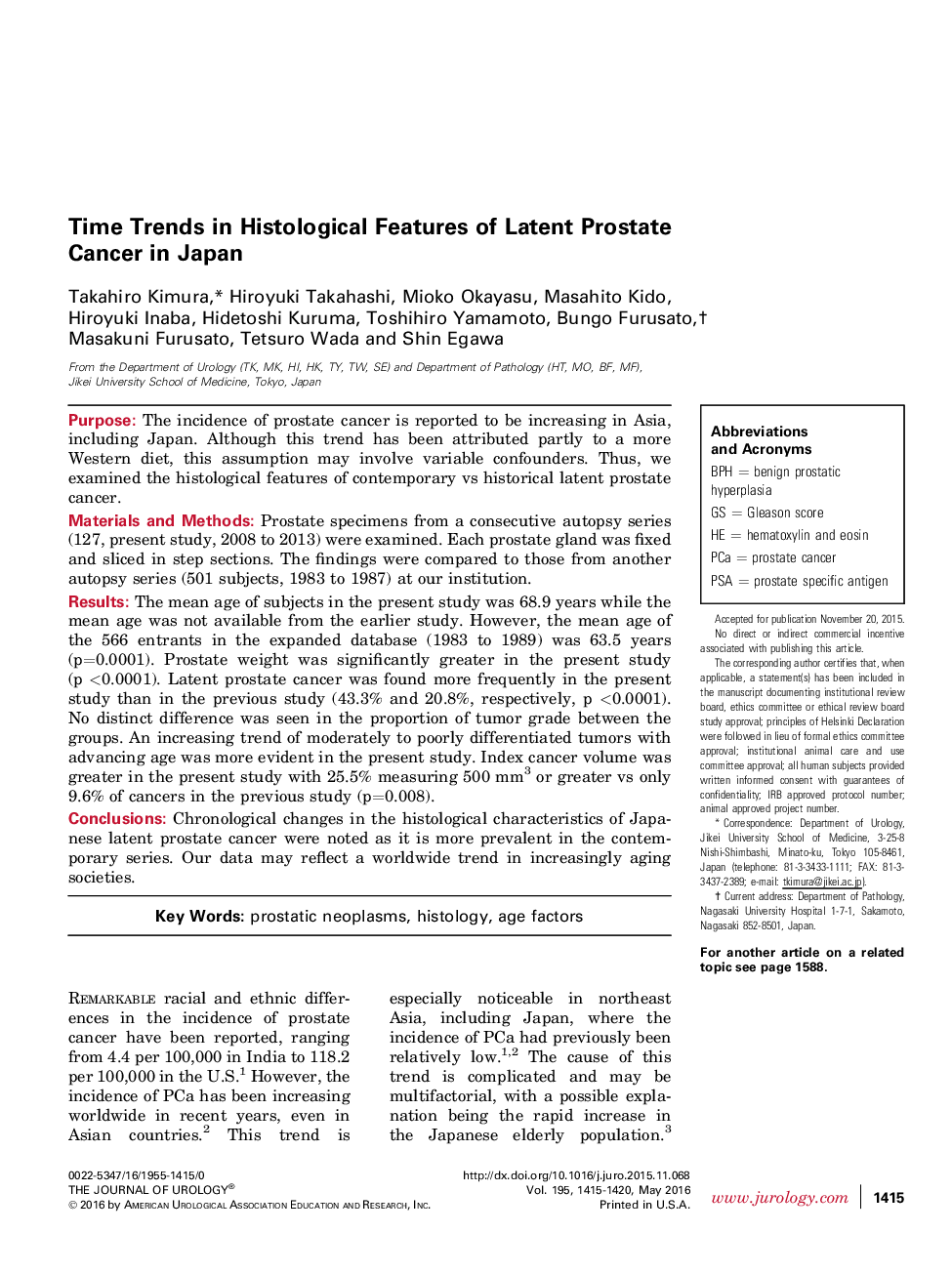| Article ID | Journal | Published Year | Pages | File Type |
|---|---|---|---|---|
| 3858956 | The Journal of Urology | 2016 | 6 Pages |
PurposeThe incidence of prostate cancer is reported to be increasing in Asia, including Japan. Although this trend has been attributed partly to a more Western diet, this assumption may involve variable confounders. Thus, we examined the histological features of contemporary vs historical latent prostate cancer.Materials and MethodsProstate specimens from a consecutive autopsy series (127, present study, 2008 to 2013) were examined. Each prostate gland was fixed and sliced in step sections. The findings were compared to those from another autopsy series (501 subjects, 1983 to 1987) at our institution.ResultsThe mean age of subjects in the present study was 68.9 years while the mean age was not available from the earlier study. However, the mean age of the 566 entrants in the expanded database (1983 to 1989) was 63.5 years (p=0.0001). Prostate weight was significantly greater in the present study (p <0.0001). Latent prostate cancer was found more frequently in the present study than in the previous study (43.3% and 20.8%, respectively, p <0.0001). No distinct difference was seen in the proportion of tumor grade between the groups. An increasing trend of moderately to poorly differentiated tumors with advancing age was more evident in the present study. Index cancer volume was greater in the present study with 25.5% measuring 500 mm3 or greater vs only 9.6% of cancers in the previous study (p=0.008).ConclusionsChronological changes in the histological characteristics of Japanese latent prostate cancer were noted as it is more prevalent in the contemporary series. Our data may reflect a worldwide trend in increasingly aging societies.
